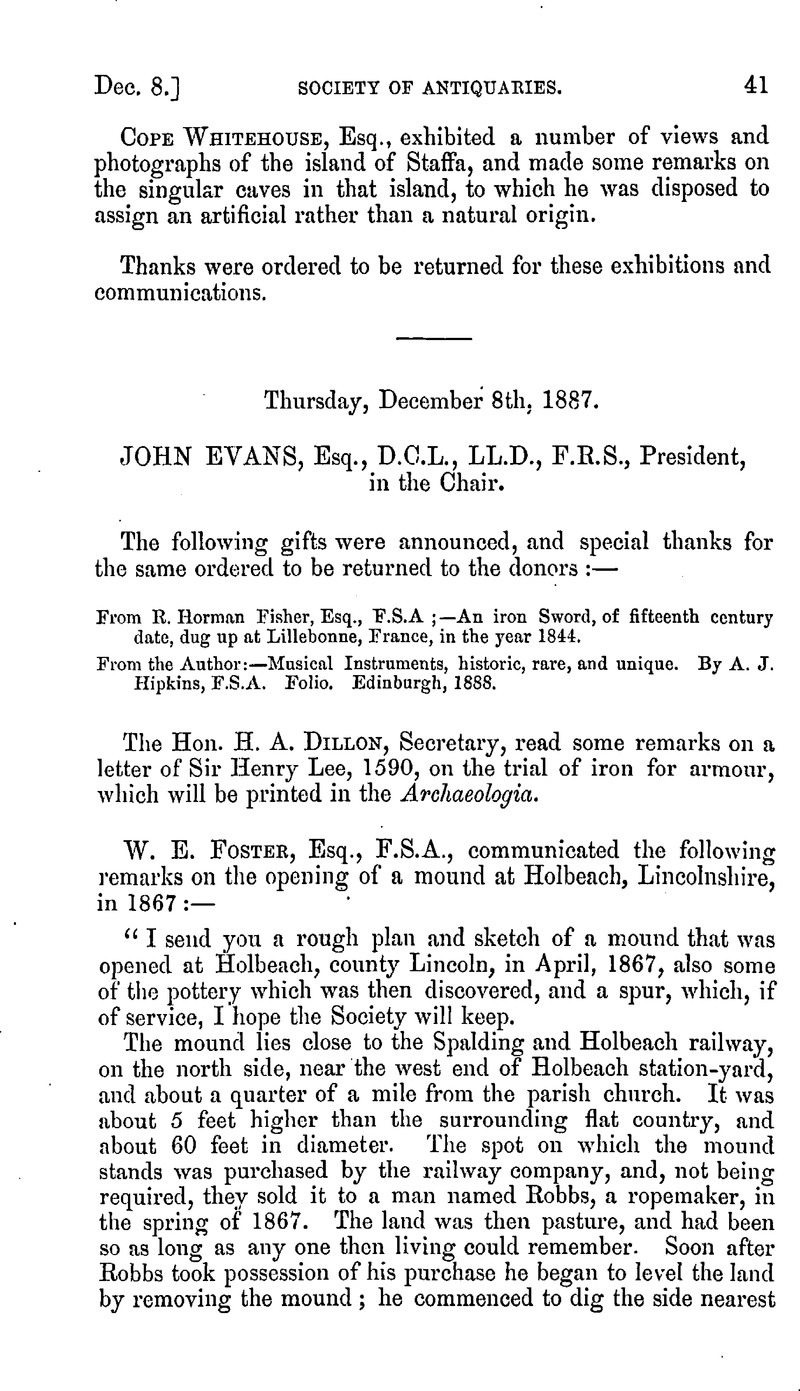No CrossRef data available.
Article contents
Thursday, December 8th, 1887
Published online by Cambridge University Press: 10 May 2010
Abstract

- Type
- Proceedings
- Information
- Copyright
- Copyright © The Society of Antiquaries of London 1889
References
page 48 note * ‘By medieval I mean any time between (say) A.D. 700 to A.D. 1500.’ Mr. Watkin in Liverpool Daily Post, 14 Sept. 1887.
page 48 note * Since this paper was read Mr. Blair has pointed out an illustration of a tombstone in M. de Caumont's Abécédaire d'Archéologie, vol. i. p. 490, ‘representing a figure in an arched recess wearing a dress similar to that of the socalled medieval priest, and not only so but he has a chalice in his right hand, or rather what the middle age advocates of the Chester stone would call one ; the face is also knocked off. As regards the age of this there can be no question, as it is inscribed, D. Ticillæ. M. along the top.’
page 50 note † Hodder M. Westropp, Early and Imperial Rome. London, 8vo. 1884, p. 203.
‡ For paintings of this kind see Raff. Garucci, Vetri ornati di figure in oro trovati nei cimiteri cristiani di Roma, Roma, 4to. 1864, tav. i. fig. 1; and De Rossi, Roma Sotterranea cristiana, Roma, fol. 1867, tomo ii. tav. xx.j tomo iii. taw. x. xiv. xxxviii.
page 51 note * For the two kinds of Roman walls (1) Murs de grand appareil, of fine squared stone 2, 3, or 4 ft. by 1 or 2 ft. thick, juxtaposées sans ciment, and (2) Murs de petit appareil, of small stones encrusted in mortar, see De Caumont, Abécéaire, vol. i. p. 52.
page 51 note † This is a false derivation by Giraldus. The proper name of Caerleon is Caer Llion, as it is always found in our more ancient MSS. The signification of Llion seems to he streams, torrents, or floodings, and the situation of the place which bears that name is on the banks of a river.—Gunn's Nennius, p. 102.
page 53 note * The official report made to the Chester City Council also states it to be a male.




